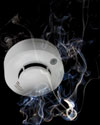

According to Donovan Britz, professional technologist at WorleyParsons, the first step in ensuring best practice with regard to fire evaluations and assessments is management buy-in and participation.
“You will not be able to implement a sustainable plan for a company if the management is not on board with the process.
“Secondly, commitment to adherence to South African fire safety legislation, that is, the Occupational Health and Safety (OHS) Act, SANS 10400, other SANS standards, local by-laws, and good practice codes, is critical. Best practice is also dependent on the particular industry in which the assessment is being conducted,” said Britz.
“Some industries have more stringent regulations than others. For example, the mining, petrochemical and chemical industries require specific, intrinsically safe equipment. In any instance, it is essential to adopt the minimum standards for the particular industry and even exceed the minimum standards where necessary.
“It is always best practice to look holistically at the entire premises of an owner when applying fire safety legislation, rather than doing evaluations and assessments on sections in isolation. This will ensure that the infrastructure is adequate to deliver what is required in the event of a fire.”
A competent person in fire engineering, preferably a Professional Registered member of the Engineering Council of South Africa (ECSA), should be responsible for ensuring the effective conduct of fire safety evaluations and assessments.
“In order for engineers, technologists and technicians to be professionally registered, they must meet the education requirements as well as demonstrate competence against standards determined by ECSA. Unfortunately, there is no formal qualification currently available for a fire engineer in South Africa. To be considered equivalent to a fire engineer in South Africa, an individual must again meet the education requirements and demonstrate competence and experience against standards determined by ECSA,” Britz continued.
He explained that a fire safety evaluation outcome should be to determine whether the current or proposed fire protection provided is adequate to enable the safe evacuation of people as well as ensuring control, containment and ultimately extinguishing of the fire. “If your installation or proposed installation does not meet minimum standards criteria, it is critical to ensure that corrective measures are taken to bring the installation up to the required standard.
“The primary aim of any fire detection, prevention and protection system, is the protection of life and property. Early detection, through smoke monitors, is vital and allows the safety and security team to mobilise and effect counter measures. However, ensuring that this equipment is adequate and fully operational should be the responsibility of a competent individual,” said Britz.
The predominant enforceable standards applicable for evaluations and assessments are the OHS Act and the National Building Regulations – SANS 10400. “All planning, design and implementation of a fire safety system needs to refer back to these obligatory standards. Coupled with that, companies are advised to ensure their compliance with local by-laws and other applicable SANS regulations. Involving local fire authorities in the planning and design stages of a fire safety system adds impetus to the reliability and validity of assessments and evaluations.
“In addition, compliance with British and American fire safety standards (where no South African standard is available), by a competent person, ensures that sound engineering principles are applied at all times. In all instances, the industry determines the rigidity of measures to be implemented when installing, upgrading or assessing a fire safety system,” added Britz.
While Britz said that the skills of those tasked with undertaking fire safety assessments may be adequate, he acknowledged that there is always room for improvement.
“Building and company owners would be well advised to appoint a fire engineer to look holistically at their fire system for evaluation prior to handing the task to a competent professionally registered person. The registered person would then undertake the design, managing, advising on appointing the correct installers of equipment, as well as performing regular inspections during the construction phase. This will ensure that the system delivered is to the specifications as prescribed by the engineer,” Britz explained.
A new evaluation should be done at least every time changes are made to the buildings or facilities on the premises. “Fire assessments should then be conducted on a regular basis by a competent person in order to ensure the identification and removal of all fire hazards and ultimately lower the risk of any fires to a minimum.”
The Fire Protection Association of Southern Africa (FPASA) offers a 10-day course in Advanced Fire Prevention, which includes fire risk assessment and fire safety legislation, amongst other topics. The Fire Detection Installers Association (FDIA) does not offer training courses but supports accredited private training establishments, such as Fire Systems Training.
| Tel: | +27 11 543 5800 |
| Email: | malckey@technews.co.za |
| www: | www.technews.co.za |
| Articles: | More information and articles about Technews Publishing |

© Technews Publishing (Pty) Ltd. | All Rights Reserved.